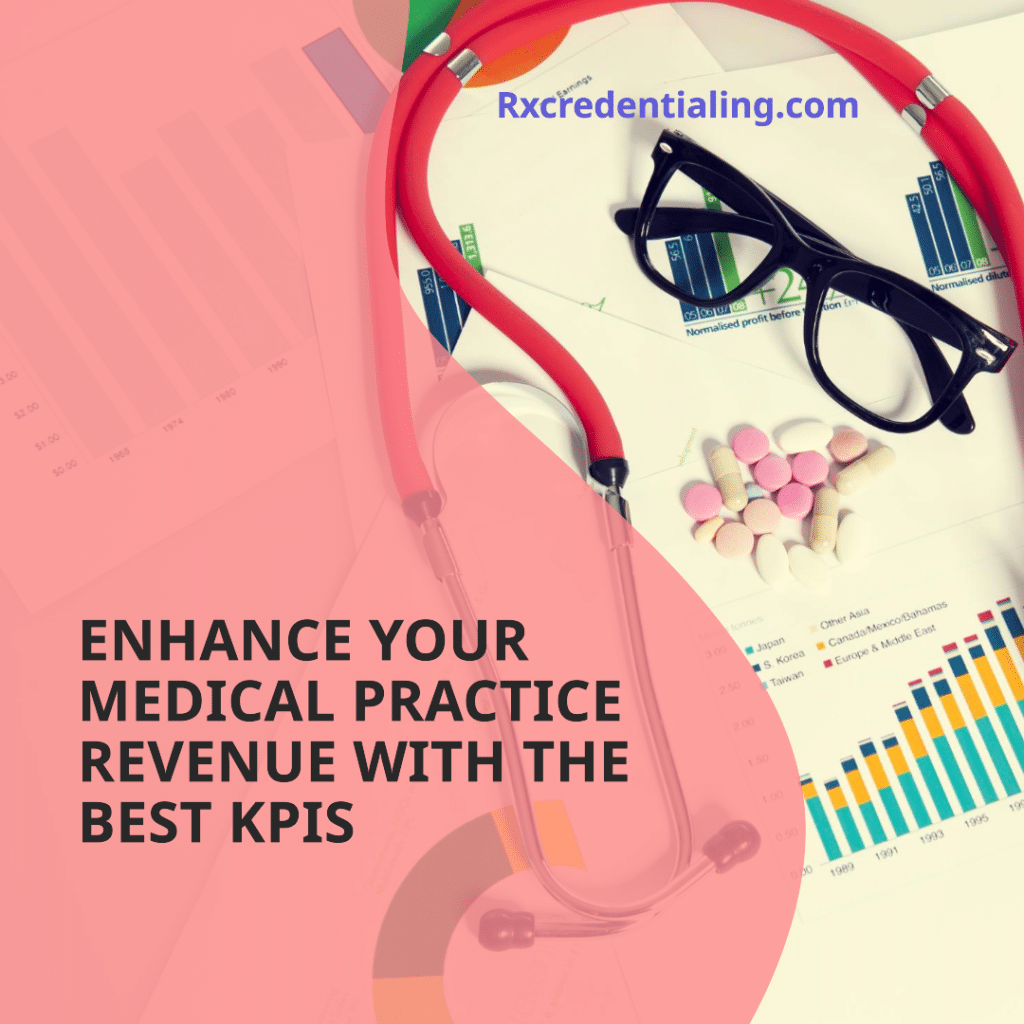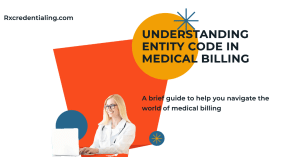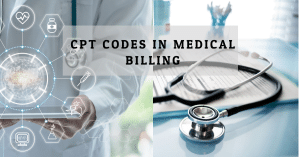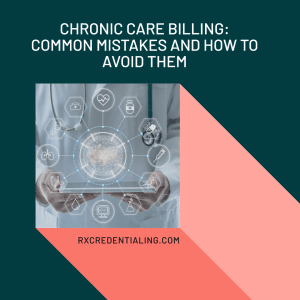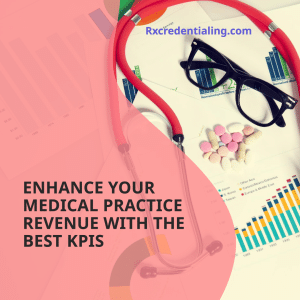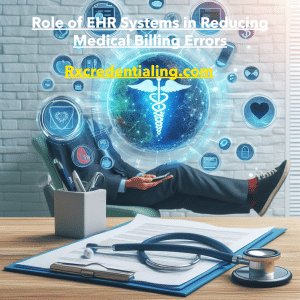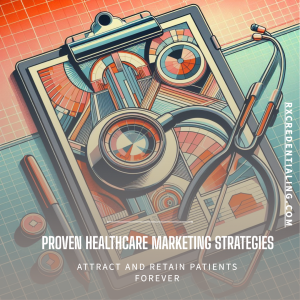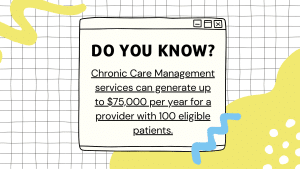Understanding Key Performance Indicators (KPIs) in Medical Practice
Key Performance Indicators (KPIs) are specific, measurable values that mirror how effectively a medical practice is attaining key business objectives.
Being part of a quantifiable approach, they offer concrete evidence of whether your practice is on track or falling behind.
Think of KPIs as health markers of your practice – just like blood pressure or cholesterol levels for your patients. By regularly checking these markers, you can diagnose problems early and take the necessary steps to get your practice’s health back in line.
Now, you might be wondering about the specific KPIs valuable for a medical practice. For this, there is no one-size-fits-all answer since it largely depends on your practice’s unique goals.
However, we do have a table that showcases some popular KPIs to begin with:
| KPI | Description |
|---|---|
| Net Collections Ratio | A measure of your practice’s effectiveness in collecting reimbursement |
| Claims Denial Rate | The percentage of claims denied by payors |
| Average Reimbursement Per Encounter | The average amount your practice gets paid per patient visit |
| Overhead Rate | Your operating expenses as a percentage of revenue |
In summary, KPIs enable data-driven decision-making, ensuring your practice’s fitness to serve patients while optimizing revenue.
Remember, what can be measured can be managed. And with KPIs, you get the means to measure, track, and ultimately improve key aspects of your practice’s functioning.
The Role of KPIs in Tracking Financial Health
You may be curious about why KPIs stand out in maintaining the financial wellbeing of your medical practice.
The answer is simple: KPIs provide actionable insights that enable you to make informed decisions. For instance, tracking revenue growth helps identify areas of success and uncover opportunities for improvement.
In essence, KPIs function as the financial ‘vital signs’ of your practice. Just as a doctor would monitor a patient’s heart rate and blood pressure, an effective practice manager watches critical financial figures.
This monitoring helps to ensure your practice remains fiscally healthy and well-handled.
| KPI | Description |
|---|---|
| Revenue Growth | A measure of the increase in a practice’s earnings. |
| Gross Profit Margin | A ratio indicating the profitability of a practice after cost of services is deducted. |
| Overhead Ratio | The proportion of income used to cover your practice’s operating expenses. |
| Net Collection Ratio | Indicates effectiveness of billing and collections efforts. |
Regular monitoring of these KPIs can help you calculate financial performance, understand your financial standing, and predict future financial health. In doing so, it ensures your practice operates with sound fiscal responsibility and stability.
Lastly, effective use of KPIs in tracking financial health does not happen in isolation. It requires collaborative effort from all staff, including physicians, nurses, and administrative personnel.
Whenever everyone is on the same page about these metrics, it’s easier to work towards the shared goal of financial prosperity.
Essential KPIs for Maximizing Revenue in Medical Practices
We’ve established the importance of key performance indicators in the medical field, but let’s now delve deep into the absolute non-negotiable KPIs needed for maximizing revenue.
These metrics serve as an effective roadmap to financial success and sustainability.
Gross Collection Ratio: This KPI represents the total amount collected in relation to the total amount billed.
An optimal ratio would be close to 100%, indicating excellent billing and collections practices. This ratio is a pivotal tool in identifying potential weaknesses in your billing process.
| Year | Gross Collection Ratio |
|---|---|
| 2019 | 95% |
| 2020 | 97% |
| 2021 | 98% |
Net Collection Ratio: The net collection ratio measures the effectiveness of the practice to collect all the money it’s legally due after subtracting contractual adjustments and write-offs. This KPI helps to evaluate how successfully your medical practice follows up on unpaid or partially paid claims. (source)
Days in Accounts Receivable (AR): This KPI calculates the average number of days taken by your medical practice to receive payments. The lower this number, the faster you’re getting paid, having a positive impact on the cash flow. (source)
Claim Denial Rate: Your claim denial rate is a key indicator of revenue leakage. A high denial rate suggests there’s a room for improvement in your claims submission process. (source)
Being meticulous with these KPIs can truly propel your revenue upwards and foster a healthier financial environment at your medical practice.
How to Implement KPIs for Better Profitability
To effectively implement KPIs in your medical practice for increased profitability, your first step should be to define your financial goals clearly. Whether it’s increasing patient traffic, improving collection rates, or negotiating better deals with insurance providers, the established objectives will guide you to select the appropriate metrics to track.
Following this, involve your personnel in the decision-making process. Engaging your team can ensure you have a thorough understanding of what’s happening at the operational level and thus, will contribute to identifying the areas where improvements can be made.
A well-documented and communicated strategy to track and monitor Key Performance Indicators is crucial for the process to be effective. Develop a routine to regularly update and review the KPI data. Also, ensure your team understands these indicators and knows how their actions can influence them.
The use of specialized software can simplify the KPI tracking process. Applications such as revenue cycle management software or electronic health records can provide comprehensive dashboards to monitor crucial business metrics. Consider investing in such tools to efficiently collate and analyze KPI data. [eClinicalWorks] and [AdvancedMD] are examples of such platforms.
| Metric | Description | Why It’s Important |
|---|---|---|
| Net Profit Margin | The percentage of profit a company makes for every dollar it generates in revenue. | To determine the efficiency of a practice in managing its operating costs while generating revenue. |
| Collections Ratio | The percentage of expected receivables that are successfully collected. | To evaluate the effectiveness of the practice’s collection efforts. |
| Average Reimbursement Rate | The average amount an insurer pays for procedures. | To understand whether the practice is getting adequately paid for the services provided. |
Patient satisfaction scores and the rate of no-show appointments are also important KPIs that indirectly influence your practice’s profitability. Tracking these alongside financial metrics can provide you with a complete picture, helping optimize overall performance and profitability.
Bear in mind that the process of implementing KPIs is ongoing. As your medical practice evolves, so will your financial goals. Thus, revisit and revise your KPIs regularly to ensure they continue serving their intended function.
Interpreting KPIs to Make Informed Financial Decisions
Interpreting key performance indicators (KPIs) is not just about identifying numbers; it’s about making sense of them in ways that drive better financial decisions.
Becoming a data-driven practice is about knowing where to focus your resources and efforts. Digital tools like CareCloud Central and DrChrono can be instrumental in helping decipher these metrics.
A deep dive into your patient demographics, for instance, could reveal untapped revenue sources. This also goes for assessing appointment show-up rates, which can offer insight into whether the practice could potentially benefit from a more targeted appointment reminder system.
Financial ratios, another type of KPI, can also prove vital. For instance, the gross collection rate provides an overview of how efficiently your practice is gathering revenue from services rendered.
A ratio below industry norms might indicate the need to reassess billing procedures or perhaps reconsider service pricing.
| KPI | Description | Calculation Methodolgy |
|---|---|---|
| Gross Collection Ratio | This measures the effectiveness of your revenue collection process in relation to services provided. | (Total Amount Collected / Total Amount Charged) *100% |
| Net Collection Ratio | An indicator of how much potential revenue is lost after contractual adjustments and patient write-offs. | ((Total Amount Collected – Contractual Adjustments) / (Total Amount Charged – Contractual Adjustments – Patient Write-offs)) *100% |
While these figures offer valuable insight, it’s important to benchmark your figures against industry standards or other practices of a similar scale. Consulting a Medical Group Management Association (MGMA) report may provide these comparative figures.
Interpreting KPIs effectively will ultimately allow you to make more informed decisions. Whether it’s re-evaluating staffing levels, rethinking appointment scheduling, or refining revenue collection efforts, data-driven decisions can lead to significant improvements in practice profitability.
Common Pitfalls in Medical Practice Revenue Optimization
When it comes to revenue optimization, even the most organized medical practices can stumble upon common pitfalls.
Let’s delve into some of these impediments that might be unknowingly hampering your progress.
Underutilization of services: One common stumbling block is the underutilization of services offered. Often, some services may go underutilized due to a lack of awareness or ineffective marketing.
According to a study, practices could significantly enhance their revenue by accurately advertising and encouraging use of all their services.
| Services | Average Utilization Rate | Potential Revenue Increase |
|---|---|---|
| Diagnostic Imaging | 65% | 10% |
| Laboratory Testing | 70% | 15% |
| Prescription Dispensing | 50% | 20% |
Insurance claim rejections: Another frequent issue is the high rate of insurance claim rejections. According to a report, an estimated 15-20% of insurance claims are rejected on initial submission, which could result in substantial revenue loss if not properly addressed.
Poor patient collections: Lastly, ineffective collection of patient dues can cause significant revenue loss. A Forbes article suggests that adopting more assertive collection methods and ensuring timely follow-up can help alleviate this issue.
In summary, avoiding these pitfalls can markedly enhance your revenue optimization efforts. It’s all about understanding the landscape and adapting your strategies to make the most of your resources.
Leveraging Technology to Track Kpis
Embracing technology is one of the most effective ways for medical practice owners to monitor and manage their KPIs.
Advancements in Health Information Technology (HIT) have presented clinics with robust tools that aid in accurate tracking and reporting of vital financial metrics.
Modern practice management and financial systems can deliver detailed reports, illustrating metrics such as billing efficiency, patient visits, operational costs, and more.
These digital tools transform raw data into meaningful insights, enabling you to make informed business decisions.
Consider deploying an Electronic Health Records (EHR) system, a crucial technology in today’s healthcare landscape.
EHR systems not only enhance patient care but also provide accurate revenue cycle data, ensure correct coding, and streamline administrative tasks.
According to a HealthIT.gov report, about 86% of office-based physicians are using an EHR system, bringing clear benefits to their revenue optimization.
An emerging technology of interest is Artificial Intelligence (AI). AI can be leveraged to automate routine administrative tasks, freeing staff to focus on more revenue-generating activities.
This Harvard Business Review study showcases the remarkable potential of AI in healthcare with numerous applications ranging from predictive analysis to developing personalized treatment plans.
| Technology | Benefits in Tracking KPIs |
|---|---|
| Health Information Technology (HIT) | Offers robust tools that aid in accurate tracking and reporting of KPIs. |
| Electronic Health Records (EHR) system | Provides accurate revenue cycle data, enhances coding accuracy and streamlines administrative tasks. |
| Artificial Intelligence (AI) | Automates routine tasks, which allows staff to focus on revenue-generating activities. |
Adopting these technologies could seem challenging initially, however, their potential benefits are ample. It’s essential to understand the capabilities of each technology to ensure they align with your practice’s goals.
Remember, the most sophisticated technology alone cannot guarantee success. Effective implementation, staff training, and continuous optimization are equally important.
The Connection Between Patient Satisfaction and Revenue Optimization
The connection between patient satisfaction and revenue optimization in medical practices might not be apparent at first, but it’s vital.
In today’s competitive healthcare industry, patient satisfaction functions as a key differentiator that has an extensive direct and indirect effect on your practice’s bottom line.
Let’s start with a simple factual premise: a happy patient is more likely to return to your practice. That means a higher patient retention rate, which is typically less expensive than acquiring new patients.
According to a report by Invensis, increasing patient retention by just 5% can boost profits by between 25% to 95%.
| Retention Rate Growth Percentage | Increment in Profit (Expected) |
|---|---|
| 5% | 25-95% |
Your practice’s online reputation also plays a big role in its financial health. Today, 80% of patients use online reviews to evaluate physicians, as per a survey by PatientPop.
So, satisfied patients who leave positive reviews can attract more new patients to your practice. This increased patient inflow will naturally enhance your revenue generation.
Plus, word of mouth is also a powerful driver when it comes to patient referrals. A satisfied patient is likely to refer their friends and family to your practice, leading to more potential revenue.
A quote from Becker’s Hospital Review indicates that patients who are referred by others have a 16% higher lifetime value.
Lastly, patient satisfaction feedback can offer valuable insight into potential operational efficiencies.
For instance, patients may offer feedback on long wait times, billing issues, or scheduling difficulties–all parameters that, when optimized, can streamline processes, save costs, and increase revenue.
So, although patient satisfaction may seem more related to patient care than financial performance, it plays a significant role in your practice’s profitability.
Tracking patient satisfaction as a KPI can thereby go a long way toward the successful optimization of your practice’s revenue.
Efficient Billing: A Crucial KPI for Successful Medical Practices
When it comes to the practical side of your medical practice, efficient billing sits near the top of the list. Why, you may ask? First, efficient billing directly influences your revenue flow.
Second, it affects your business relationships, notably with patients and insurance companies. Above all, it can be a source of measurable insights that can help you improve the entire functioning of your practice.
Thus, it is prudent for medical practices to prioritize efficient data collection and accurate submission of claims.
According to a study published in Public Library of Science, up to 30% of Healthcare Provider’s bills contain errors. These errors not only delay payment; many also lead to denials that further impact revenue.
| Benefits of Efficient Billing | Examples |
|---|---|
| Improved cash flow | Less delay in insurance reimbursements |
| Reduced Billing Errors | Lower denial rates leading to maximized revenue |
| Increased Patient Satisfaction | Less confusion about bills leading to better patient experience |
Keeping track of metrics like claim denial rates, claim submission timeliness, and billing error rates is essential.
This data could help in flagging problems early, helping you to stay proactive in your billing strategy and prevent unnecessary revenue loss.
Implementing a successful billing strategy may sound daunting, but there’s good news: various modern medical billing software solutions can handle much of the legwork, allowing your practice to focus on patient care.
According to a Grand View Research report, the market size for these software options is expected to reach $29.6 billion by 2028.
With the right tools and metrics, you can optimize your medical practice’s billing procedure and, by extension, its revenue.
Understanding the Impact of Insurance Reimbursements on Revenue
If you’re running a medical practice, fully comprehending the role of insurance reimbursements in your revenue stream is paramount. Often, a significant segment of a healthcare facility’s income comes from insurance payouts.
With over $3.8 trillion spent on healthcare in the US, a large proportion is covered by health insurance companies, showing their influence over your revenue.
Insurance carriers use standardized coding systems like Current Procedural Terminology (CPT) and International Classification of Diseases (ICD-10) to determine reimbursements.
Understanding these codes and ensuring their accurate implementation can substantially boost your revenue.
Moreover, insurance companies offer varying rates of reimbursement. This difference arises from the policy terms agreed upon with patients.
Even Medicare and Medicaid services, while broadly following a federal rate, can have variations on a state level. These variations can significantly impact your revenue optimization efforts.
| Insurance Company | Average Reimbursement Rate(%) |
|---|---|
| Company A | 70 |
| Company B | 75 |
| Company C | 80 |
Therefore, being able to negotiate better reimbursement rates with insurance providers can help your medical practice’s profitability.
Regularly reviewing the contracts you have with insurance carriers to confirm they’re aligned with your financial goals is a worthwhile endeavor.
Besides, you must remain aware of the billing cycle length of different insurances.
A quicker cycle results in faster reimbursements, positively impacting your cash flow. In contrast, longer cycles can incur additional debt for your practice and reduce the liquidity of your funds.
The key takeaway here is establishing a well-managed billing system and a dedicated team educated about insurance coding and reimbursement policies.
This team should be capable of liaising with insurance companies for better reimbursement rates, thereby ensuring an optimized approach towards handling insurance claims.
Optimizing Appointment Scheduling for Increased Revenue
Successful optimization of your appointment scheduling can be a game-changer for boosting revenue, with studies suggesting that this strategy significantly enhances patient satisfaction while also reducing no-shows (NCBI) . Let’s delve deeper into just how this works.
Adopting an efficient scheduling system allows your medical practice to accommodate a higher number of appointments.
For instance, consider a standard clinic operating for ten hours a day. If patients are scheduled every half an hour, you’re limited to 20 appointments.
But if you can optimize that to a patient every twenty minutes, that bumps your daily appointments to 30. This change alone can lead to a tremendous increase in revenue, assuming your no-show rate remains constant.
An element often overlooked is the impact of appointment punctuality on patient satisfaction.
It’s no secret (American Journal of Managed Care) that patients readily express their dissatisfaction when made to wait longer than expected. Such discontent can lead to patients seeking care elsewhere – a loss for your practice both reputation-wise and financially.
Obviously, squeezing more appointments into a day shouldn’t compromise the quality of care. You have to balance between seeing as many patients as possible and ensuring each patient gets the attention they neeed.
Take a look at the comparison chart below:
| Appointment per day | Revenue per appointment | Total Daily Revenue |
|---|---|---|
| 20 | $100 | $2000 |
| 30 | $100 | $3000 |
To recap, optimizing your appointment scheduling is more than just about increasing the number of daily appointments.
It’s also about improving patient satisfaction and ensuring quality of care, both of which can lead to stronger patient loyalty and ultimately a rise in your practice’s revenue.
Reducing Operational Costs via KPI Tracking
Maintaining control over your operational costs is pivotal to keeping your medical practice financially healthy.
KPI tracking offers a solid solution for achieving this. But how exactly can you leverage KPIs to trim operational costs? Let’s delve into this.
First, consider the “Cost per Patient Visit” KPI. This metric gives you the average cost your practice incurs for each patient visit.
By measuring this consistently, you’ll be able to spot trends and make necessary adjustments to control costs.
For example, if the Cost per Patient Visit has a sudden spike, you may need to scrutinize your expense data to figure out what’s driving the increase.
| Key Performance Indicator | Description | Importance |
|---|---|---|
| Cost per Patient Visit | The average cost your practice incurs for each patient visit | Helpful in spotting trends and making necessary adjustments to control operational costs |
Secondly, keep a keen eye on the “Overhead Ratio” KPI. The Overhead Ratio indicates what proportion of your practice’s revenue is being spent on operating costs such as labor, rent, or equipment.
A low overhead ratio signifies that your practice is cost-efficient, while a high ratio may be an indicator that you’re overspending.
| Key Performance Indicator | Description | Importance |
|---|---|---|
| Overhead Ratio | The proportion of practice revenue spent on operating costs | Indicates the efficiency of cost management in your practice |
In conclusion, through vigilant KPI tracking, you can reduce operational costs, optimize resources and ultimately increase your practice’s profitability.
Future Trends: KPIs and Medical Practice Revenue Optimization
As we continue to navigate the ever-evolving landscape of healthcare, the importance of utilizing KPIs for revenue optimization in medical practices is set to increase.
With advancements in technologies and a growing emphasis on data-driven decision making, the trends influencing KPIs are worth understanding.
World Economic Forum suggests that digitalization of healthcare is one imminent change. This signifies that digital platforms would play a starring role in tracking and managing KPIs, offering more accurate and real-time data.
Additionally, value-based care is another essential trend to prepare for. In a value-centered model, tracking KPIs like patient satisfaction, evidence-based care outcomes, and cost-effectiveness would be critical.
As per a report by McKinsey, implementing such models can potentially save hundreds of billions of dollars while boosting patient care quality.
Moreover, data interoperability presents another emerging trend. The concept calls for sharing crucial healthcare data between different providers and systems.
This could mean broader and more streamlined tracking of KPIs, leading to more comprehensive insights and reports.
Alongside these trends, here’s a quick look at some important KPIs and how they are likely to shape the future. Feel free to draw insights from these for your own practice.
| KPI | Current Importance | Future Relevance |
|---|---|---|
| Cost per patient | Primary metric for measuring profitability. | Will be used to optimize the value-based care model. |
| Patient satisfaction | Crucial for reputation and referrals. | Will become integral part of value-based care indicators. |
| Collections efficiency | Directly impacts revenue generation. | Will be used to streamlining digital payment and billing methods. |
Undoubtedly, the future of medical practice revenue optimization through KPIs holds immense potential. The key lies in staying updated with the trends and harnessing them optimally for your practice.


